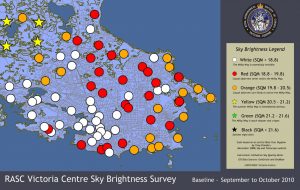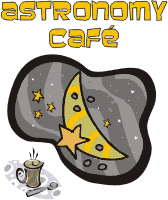Transcript video of meeting

Dr. Michelle Kunimoto is a postdoctoral associate working on NASA’s Transiting Exoplanet Survey Satellite (TESS)mission. She leads the Quick Look Pipeline team at MIT which is dedicated to analyzing TESS data to discover and characterize exoplanets. As an undergraduate, her discoveries of four planet candidates landed her on the Forbes 30 Under 30 list in 2017. Michelle is BC born and raised and received both her undergraduate degree and her PhD at the University of British Columbia.
Finding Earth 2.0 – Dr. Michelle Kunimoto
Michelle spoke about how we find exoplanets, identify potentially “habitable” planets, about what she does as a researcher with NASA’s TESS mission, and how anyone can join the hunt for new planets.
- Are we alone? What would other life look like?
- Assuming Earth-like conditions for life
- Small, rocky, watery planet with an atmosphere
- In the habitable zone around a host star
- Stars that are similar to our Sun – “just right” and stable, long-lived
- 30 years ago, the first exoplanets were discovered by Alex Wolszczan and Dale Frail
- Gordon Walker actually discovered an exoplanet back in 1988 from Victoria, but not confirmed until 2002
- How to detect an exoplanet
- Pulsar
- Doppler shift due to Stellar Wobble – radial velocity
- Transit – the method Michelle uses in her work
- Direct Imaging
- Astrometry
- others…
- Kepler – NASA’s first exoplanet discovery mission
- Used the transit method from 2009 to 2013
- 150,000+ stars observed for 4 years
- Revolutionized exoplanet by discovering over half of all dis
- K2 mission extended the discoveries to 2018
- Tess – NASA mission started in 2018
- Full sky coverage
- Orbits around the Earth in a following, elliptical orbit
- 27 days to a full year of observations for each object
- Automated detection, then manual verification to avoid false positives
- Michelle has discovered 1,600 candidate planets
- Whole mission has confirmed 152 out of 3,285 candidate planets
- A total of 4,531 exoplanets have been discovered (not just from the Tess mission)
- Diversity of exoplanets is extensive
- TRAPPIST-1 System
- 7 exoplanets
- 3 in habitable zone, and Earth-sized
- James Web space telescope will examine this system in detail
- 20 candidate exoplanets have been discovered that are Earth-sized and appear to possibly support life as we know it
- Keppler-452b – most Earth-like exoplanet
- Transmission spectroscopy – detect the characteristics of an exoplanet’s atmosphere
- Habitable Exoplanet Observatory – a proposed space telescope that will perform direct imaging of exoplanets
- How you can hunt for exoplanets
- Anyone can access the data from the Mikulski Archive
- Michelle found 4 candidate planets during a summer project
- Planet Hunters TESS site – the public can help with this work – just visual pattern detection
- Anyone can join the TESS vetting team and interact with the rest of the team
- Upcoming missions
- PLATO – 2026 mission
- NRT – mid-2020s
- Q&A
Members’ Reports
- FDAO Star Party – Oct 30th AGM starting at 7:00PM and Brenda Matthews’ work at ALMA – Lauri Roche
- Nerd Anomoly – Nathan Hellner-Mestelman
- Nathan’s cartoons to be published in Skynews magazine
- Shared some of his cartoons
- Randy Enkin
- A rainy day at Fairfield Fall Fair!
- Sunspotter demo
- Aurora photo taken from Mt. Tolmie
- Victoria Philharmonic Choir – Hayden’s Creation was performed to a small, live audience – shared an audio clip
- Edmonton Astrophotos – Dave Robinson
- Aurora by Eric Klaszus’ mother, Abdur Anwar, and an all sky camera
- Elephant Trunk dark nebula – Abdur Anwar
- Light Pollution Survey – David Lee
- Last light pollution survey – Sep & Oct 2010 (maps)
- Over a dozen members have already volunteered to re-do the survey
- Victoria Centre will borrow 3-4 SQM meters from National, and also use members’ own SQM meters
- First week in November is first target time to conduct the survey
- Perhaps take a wide angle photo of the sky at each location to record light source conditions – Dave Robinson
- Last time it took 2 nights in September and again in October
- Contact David if interested in participating


